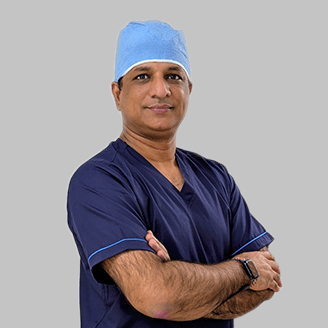-
Doctors
-
Specialities & Treatments
Centre of Excellence
Specialties
Treatments and Procedures
Hospitals & Directions HyderabadCARE Hospitals, Banjara Hills CARE Outpatient Centre, Banjara Hills CARE Hospitals, HITEC City CARE Hospitals, Nampally Gurunanak CARE Hospitals, Musheerabad CARE Hospitals Outpatient Centre, HITEC City CARE Hospitals, Malakpet
HyderabadCARE Hospitals, Banjara Hills CARE Outpatient Centre, Banjara Hills CARE Hospitals, HITEC City CARE Hospitals, Nampally Gurunanak CARE Hospitals, Musheerabad CARE Hospitals Outpatient Centre, HITEC City CARE Hospitals, Malakpet Raipur
Raipur
 Bhubaneswar
Bhubaneswar Visakhapatnam
Visakhapatnam
 Nagpur
Nagpur
 Indore
Indore
 Chh. Sambhajinagar
Chh. SambhajinagarClinics & Medical Centers
Book an AppointmentContact Us
Online Lab Reports
Book an Appointment
Consult Super-Specialist Doctors at CARE Hospitals

Tennis Elbow
Tennis Elbow
Best Tennis Elbow Treatment in Hyderabad, India
Tennis elbow, also known as lateral epicondylitis, is a painful elbow ailment caused by overuse of wrist and arm. Tennis and other racquet activities, unsurprisingly, can induce this disease. However, a variety of other sports and activities, in addition to athletics, might put you at risk.
Tennis elbow is a condition characterized by inflammation or, in rare cases, micro-tearing of the tendons that connect the forearm muscles on the outside of the elbow. Overuse – repeating the same actions over and again — damages the forearm muscles and tendons. As a result, discomfort and tenderness develop on the outside of the elbow.
In most circumstances, therapy entails a collaborative effort. Primary care physicians, physical therapists, and, in certain situations, surgeons at CARE Hospitals collaborate to offer the best possible care.
The tennis elbow is frequently caused by injury to a certain forearm muscle. When the elbow is straight, the ECRB muscle serves to support the wrist. This happens, for example, during a tennis groundstroke. Overuse weakens the ECRB, causing minute rips in the tendon where it joins to the lateral epicondyle. Inflammation and discomfort develop as a result of this.
Because of its location, the ECRB may be more vulnerable to injury. The muscle brushes against bone bumps as the elbow bends and straightens. This can result in progressive muscular wear and tear over time.
Causes
Repetitive arm movements can result in fatigue of the muscles in your forearm. A single tendon connects these muscles to the bony protrusion on the outer side of your elbow, known as the lateral epicondyle. When your muscles become exhausted, the tendon bears a greater load. This increased strain can lead to inflammation and pain, a condition referred to as tendinitis. Over time, this continual stress can give rise to a degenerative state known as tendinosis. Both tendinitis and tendinosis can eventually lead to the tearing of the tendon.
Occasionally, tennis elbow can be triggered by a sudden injury to the arm or elbow. In rare cases, individuals may develop this condition without a known cause, a condition referred to as idiopathic tennis elbow.
Symptoms
Tennis elbow symptoms appear gradually. In most situations, the pain is minor at first and gradually intensifies over weeks and months. Typically, there is no identifiable injury connected with the onset of symptoms.
Tennis elbow is characterized by the following signs and symptoms:
-
Experiencing pain or burning on the outside of your elbow
-
A lack of grip strength
-
Sometimes there is a nighttime ache
-
Forearm action, such as grasping a racquet, spinning a wrench, or shaking hands, frequently aggravates the symptoms. The dominant arm is most commonly afflicted, however, both arms might be affected
Diagnosis At CARE Hospitals
At CARE Hospitals doctors use pioneering diagnosis measures to offer patients the most efficient treatments for their ailments and speedy recovery.
Many variables will be considered by your doctor while making a diagnosis. These include the onset of your symptoms, any occupational risk factors, and participation in leisure activities.
Your doctor will discuss with you what activities trigger symptoms and where the symptoms occur on your arm. If you have ever hurt your elbow, make sure to inform your doctor.
Your doctor will perform a range of tests to determine the diagnosis during the examination. For example, your doctor may instruct you to try straightening your wrist and fingers against resistance while keeping your arm fully straight to observe whether this creates pain. If the tests come back positive, your doctor will know that certain muscles are not in good shape.
In many circumstances, your medical history and physical exam are sufficient for your doctor to diagnose a tennis elbow. However, if your doctor feels that something else is causing your symptoms, they may recommend X-rays or another imaging test.
Prevention
You can prevent tennis elbow by following these guidelines:
- Do not disregard pain; it's your body's means of communicating with you, and it's crucial to heed it. Ignoring pain can result in tendon damage and the possibility of tears.
- Ensure your equipment fits correctly: For instance, using racquets that are either too stiff or strung too loosely can reduce the strain on your forearm.
- Engage in weightlifting to enhance the strength of your forearm and wrist muscles.
- Prior to beginning any task or physical activity, perform wrist and arm stretching exercises.
- Consider wearing an elbow brace to prevent the worsening of symptoms.
The tests required
Your doctor may advise you to undergo further testing to rule out other possible reasons for your condition.
-
X-rays - X-rays offer detailed views of dense structures like bone. They can be used to rule out elbow arthritis.
-
Scan with magnetic resonance imaging (MRI) - MRI scans produce pictures of the soft tissues of the body, such as muscles and tendons. An MRI scan may be requested to identify the amount of tendon damage or rule out other ailments. If your doctor suspects you have a neck problem, he or she may request an MRI scan to examine if you have a herniated disc or arthritic changes in your neck. Arm discomfort can be caused by either of these illnesses.
-
Electromyography (EMG) - An EMG may be ordered by your doctor to rule out nerve compression. Many nerves pass through the elbow, and the symptoms of nerve compression are similar to tennis elbow.
Treatment of Tennis Elbow
Non-surgical management
-
Nonsurgical therapy - Nonsurgical therapy is effective in around 80 to 95 percent of patients.
-
Rest - The first step toward recuperation is to rest your arm. This implies that you will have to refrain from or reduce your involvement in sports, strenuous labour, and other activities that generate uncomfortable symptoms for several weeks.
-
Therapy for the body - Specific workouts might assist to develop the forearm muscles. To enhance muscle recovery, your therapist may also use ultrasound, ice massage, or muscle-stimulating treatments.
-
Brace - Using a brace centered across the back of your forearm may also help ease tennis elbow pain. This can help to alleviate discomfort by relaxing the muscles and tendons.
-
Platelet-rich plasma (PRP) - It is a biological therapy used to enhance the tissue's biological environment. This entails drawing a tiny amount of blood from the arm and centrifuging (spinning) it to separate platelets from the solution. Platelets have a high concentration of growth factors and can be injected into the afflicted region. While some research on the efficacy of PRP has been unclear, others have yielded encouraging findings.
-
Extracorporeal shock wave treatment (ESWT) - Shock wave treatment involves the application of sound waves to the elbow. Microtrauma is created by these sound waves, which enhance the body's natural healing processes. Many doctors consider shock wave treatment to be experimental, yet some evidence suggests it can be useful.
Check the equipment. If you play racquet sports, your doctor may recommend that you have your equipment evaluated for a good fit. Stiffer racquets and looser-strung racquets may typically lower forearm tension, which means the forearm muscles do not have to work as hard. If you use an enormous racquet, switching to a smaller head may help avoid the recurrence of symptoms.
Surgical Intervention
If non-surgical therapies do not relieve your problems after 6 to 12 months, your doctor may propose surgery. The majority of tennis elbow surgical treatments include removing damaged muscle and reattaching healthy muscle to bone.
The best surgical method for you will be determined by a number of criteria. These include the severity of your injuries, your overall health, and personal requirements. Discuss your alternatives with your doctor. Discuss your doctor's findings as well as any dangers linked with each operation.
-
Open surgery is the most common method of tennis elbow restoration. This entails cutting an incision across the elbow.
-
Arthroscopic surgery: Tennis elbow can also be treated using little incisions and microscopic devices. This is a same-day or outpatient operation, similar to open surgery.
Recovery and Rehabilitation
Recovery and rehabilitation for tennis elbow (lateral epicondylitis) involve a combination of rest, physical therapy, and gradual return to activities. Here are the key components of recovery and rehabilitation:
- Rest and Activity Modification
- Avoid Aggravating Activities: Limit activities that cause pain or strain on the elbow, such as racquet sports or heavy lifting.
- Ice Therapy: Apply ice packs to the affected area for 15-20 minutes several times a day to reduce swelling and pain.
- Physical Therapy
- Stretching Exercises: Gentle stretching of the forearm and wrist muscles can improve flexibility and reduce tension.
- Strengthening Exercises: Once the pain decreases, strengthening exercises focusing on the forearm, wrist, and elbow can help rebuild strength. Common exercises include:
- Wrist curls
- Reverse wrist curls
- Eccentric wrist extensions
- Manual Therapy: A physical therapist may use hands-on techniques to improve mobility and reduce pain.
- Bracing
- Forearm Brace: Wearing a forearm strap or brace can help alleviate pressure on the elbow and reduce pain during activities.
- Pain Management
- Over-the-Counter Pain Relievers: Nonsteroidal anti-inflammatory drugs (NSAIDs) like ibuprofen or naproxen can help manage pain and inflammation.
Exercises for Tennis Elbow
Physical therapy is a common treatment option for tennis elbow, regardless of whether surgery is performed. Here are some exercises that can help alleviate your symptoms:
- Finger Stretch
- Place a rubber band around your fingers and thumb, cupping your hand.
- Gradually spread your fingers and thumb apart, then bring them back together.
- Aim for three sets of 10 repetitions, doing this 2-3 times a day.
- Ball Squeeze
- Hold a tennis ball or a stress ball in your hand.
- Squeeze it tightly, then release.
- Complete this exercise 10 times, repeating 5-7 times a week. If this causes discomfort, try using a softer object, like a sponge or crumpled socks.
- Wrist Stretch (Palm Down)
- Extend your arm straight out with your palm facing down.
- Use your other hand to gently pull down on the fingers of the outstretched hand until you feel a stretch in the inner forearm.
- Hold this position for 15 seconds. Repeat five times, then switch to the other arm. You can perform this stretch up to four times a day.
- Wrist Stretch (Palm Up)
- Extend your arm straight out with your palm facing up, as if signaling someone to stop.
- Use your other hand to gently pull back on the fingers of the outstretched hand until you feel a stretch in the outer forearm.
- Hold for 15 seconds. Repeat five times, then do the same for the other arm. This stretch can be done up to four times a day.
- Wrist Turn
- Bend your elbow to 90 degrees, keeping it close to your side to form an "L" shape.
- Extend your hand with your palm facing up.
- Gently rotate your wrist so your palm faces down.
- Hold this position for 5 seconds, then slowly return to the starting position. Aim for three sets of 10 repetitions.
- Forearm Strengthening
- Bend your elbow at a 90-degree angle.
- Support your forearm on a table with your wrist hanging off the edge.
- Slowly turn your palm up while keeping your elbow still.
- Return your wrist to the starting position, then slowly turn your palm down. Repeat this sequence for three sets of 10 repetitions.
Who is at risk of getting tennis elbow?
Tennis elbow, or lateral epicondylitis, can affect anyone, but certain groups are more at risk, including:
- Athletes: Particularly those who play racquet sports like tennis or squash, where repetitive arm motions are common.
- Manual Laborers: People who engage in jobs that require repetitive wrist and arm movements, such as carpenters, painters, and plumbers.
- People Over 30: The risk increases with age, especially for those between 30 and 50 years old.
- Individuals with Poor Technique: Poor form or technique in sports and physical activities can increase the strain on the elbow.
- People with Existing Conditions: Those with conditions such as arthritis or a previous injury to the elbow may be more susceptible.
Our Doctors
-

Dr. Lalit Jain
MBBS, MS
Orthopaedics
View More -

Dr. Ankur Singhal
MBBS, MS
Orthopaedics
View More -

Dr. Prasad Patgaonkar
MBBS, DNB (Orthopaedics)
Orthopaedics
View More -

Dr. Manish Shroff
MBBS, MS (Orthopaedics)
Orthopaedics
View More -

Dr. A K Jinsiwale
MBBS, MS (Ortho), Dip M.V.S (Sweden), F.S.O.S
Orthopaedics
View More -

Dr. Vikas Jain
M.B.B.S, M.S. (Orthopaedics), F.I.J.R, F.I.R.J.R, F.A.S.M
Orthopaedics
View More -

Dr. Praveen Agrawal
MBBS, D.Ortho
Arthroscopy & Sports Medicine
View More -

Dr. (Lt Col) P. Prabhakar
MBBS, DNB (Orthopedics), MNAMS, FIMSA, Fellow in Complex Primary & Revision Total Knee Arthroplasty (Switzerland)
Orthopaedics
View More -

Dr. Ajay Kumar Paruchuri
MBBS, MS (Orthopaedics), MCh (Orthopaedics, UK), Fellowship in Shoulder Arthroscopy (UK)
Orthopaedics
View More -

Dr. Anand Babu Mavoori
MBBS, MS (Ortho), Fellow in Computer Assisted Joint Replacement Surgery, Sports & Arthroscopic Surgery, Spine Surgery
Orthopaedics
View More -

Dr. Arun Kumar Teegalapally
MBBS, DNB, FIAP, FIAS
Orthopaedics
View More -

Dr. Ashok Raju Gottemukkala
MBBS, MS Ortho
Orthopaedics
View More -

Dr. Ashwin Kumar Talla
MS (Orthopaedics), DNB (Ortho)
Orthopaedics
View More -

Dr. B N Prasad
MBBS, MS(Ortho)
Orthopaedics
View More -

Dr. Behera Sanjib Kumar
MBBS, MS (Ortho), DNB (Rehab), ISAKOS (France), D. P. M. R
Orthopaedics
View More -

Dr. Chandra Sekhar Dannana
MBBS, MS (Orthopedics), MRCS, FRCSEd (Trauma & Orthopaedics)
Orthopaedics
View More -

Dr. E.S. Radhe Shyam
MBBS, MS
Orthopaedics
View More -

Dr. Hari Chaudhari
MBBS, MS (Orthopaedics)
Orthopaedics
View More -

Dr. K.S.Praveen Kumar
MBBS, MS (Ortho)
Orthopaedics
View More -

Dr. Kiran Lingutla
MBBS (Manipal), D'Ortho, MRCS (Edinburgh-UK), FRCS Ed (Tr & Ortho), MCh Ortho UK, BOA Sr. Spine Fellowship UHW, Cardiff, UK
Orthopaedics, Spine Surgery
View More -

Dr. Kotra Siva Kumar
Mbbs, DNB in Orthopaedics
Orthopaedics
View More -

Dr. Madhu Geddam
MBBS, MS (Ortho) (OSM), FISM, FIJR
Orthopaedics
View More -

Dr. Mir Zia Ur Rahaman Ali
MBBS, D.Ortho, DNB Ortho, MCh Orth (UK), AMPH (ISB)
Orthopaedics
View More -

Dr. P Venkata Sudhakar
MS Ortho (AIIMS), Mch Spine Surgery (AIIMS) Fellow, Endoscopic Spine Surgery (Asian Spine Hospital, Hyderabad)
Spine Surgery
View More -

Dr. P. Raju Naidu
MBBS, MS(Ortho)
Orthopaedics
View More -

Dr. Pankaj Dhabaliya
MBBS, D.Ortho
Orthopaedics
View More -

Dr. Pratik Dhabalia
MBBS, MS (Ortho), MRCS
Orthopaedics
View More -

Dr. Priyesh Dhoke
MBBS, MS (Orthopedics) F.A.O.S. (Australia) AO Spine International Clinical Fellowship, Brisbane (Australia) Clinical fellowship in Minimal invasive Spine Surgery (MISS) (SGH, Singapore)
Orthopaedics, Spine Surgery
View More -

Dr. Pushpvardhan Mandlecha
MBBS, MS (Orthopedics)
Orthopaedics
View More -

Dr. Raghu Yelavarthi
MBBS, D.Ortho
Orthopaedics
View More -

Dr. Ravi Chandra Vattipalli
MBBS, DNB Ortho
Orthopaedics
View More -

Dr. Repakula Kartheek
MBBS, MS (ORTHOPAEDICS), FIJR, FIKS(NL), FIHPTS(SWTZ)
Orthopaedics
View More -

Dr. Romil Rathi
MBBS, MS (Orthopedics)
Orthopaedics
View More -

Dr. Sandeep Singh
MBBS, MS (Ortho), MRCS (Glasgow), MRCS(UK), FRCS(Primary & Revision Joint Replacement, London), Fellow Sports Injury (UK)
Orthopaedics
View More -

Dr. Sharath Babu N
MBBS, DNB (Ortho), Fellowship in Joint Replacement & Revision (Germany),Fellowship in Arthroscopy (Germany),Spl in Trauma & Sports Medicine
Orthopaedics
View More -

Dr. Sohael Mohammed Khan
MBBS, MS (Orthopaedics), Diploma (Spine Rehabilitation)
Spine Surgery
View More -

Dr. Sripurna Deepti Challa
MBBS, MD, Fellowship in Rheumatology, MMed Rheumatology
Rheumatology
View More -

Dr. Subodh M. Solanke
MBBS, DNB (Ortho), FIJR, MNAMS
Orthopaedics
View More -

Dr. Suman Kumar Nag
MS, MBBS
Arthroscopy & Sports Medicine
View More -

Dr. Vasudeva Juvvadi
MBBS.,MS(Ortho).
Orthopaedics
View More -

Dr. Vibha Siddannavar
BPT, MPT (Ortho), MIAP
Physiotherapy & Rehabilitation
View More -

Dr. Yadoji Hari Krishna
MBBS, MS (Orthopaedics), Fellowship in Shoulder Surgery, Arthroscopy, and Sports Medicine, Arthroscopy of Complex and Multiligamentous Knee Injury
Orthopaedics
View More -

Dr. Zafer Satvilkar
MBBS, MS (Ortho), FJRS
Orthopaedics
View More
Frequently Asked Questions
Still Have a Question?

